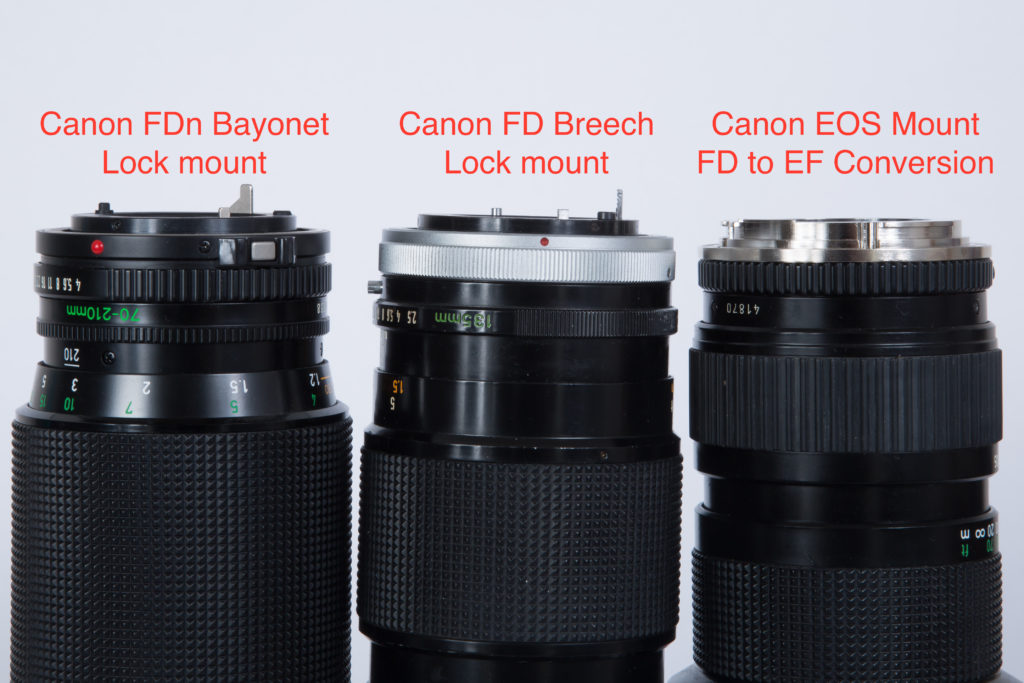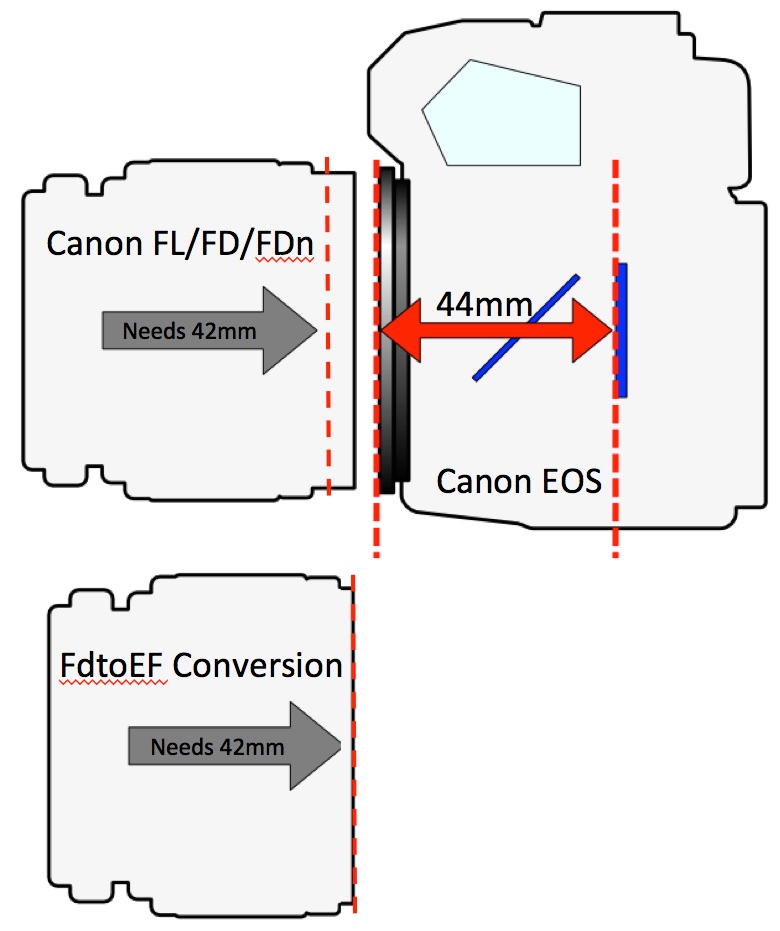Q: I get the impression that the conversion mounts are lens-specific, not generic, and therefore would only work with the particular lens it was designed for?
A: Correct this will only work on Canon FDn lenses. The conversion plate design is the same for each Canon FDN lens. The main difference between lenses is the aperture arm design, this is an internal component. The other difference is that Dandelion AF chip that interfaces with the camera electronics needs to be program with the specific lens parameters, focal length and maximum aperture.
Q: What’s the difference between FDn and FD mount and how do I know if my lens is a FD Breech Lock or a FD Bayonet Lock.
A: The original Canon FD breech lock lenses have a silver mounting ring that you rotate to mount the lens to the FD camera body. The newer Canon FDn bayonet lock lenses have a black mounting ring with a chrome lens lock release button. The newer FDn bayonet lock lenses are mounted to the FD camera body by rotating the whole lens. The newer FD series also known as “FDn”, “nFD” or “New FD” are the newer all-black bayonet mount were manufactured starting in 1979, replacing the older silver-mount-ring breech lock FD series produced between 1971 – 1979.
The following photo illustrates the differences between the FDn Bayonet and FD Breech Lock mounts.
Q: If a mirror does get stuck on the rear lens element, what is the procedure for safely getting it unstuck?
A: This situation doesn’t damage the lens or the mirror, you need to focus the lens nearer and the mirror will release. We is recommend that you use LiveView for the lenses that do prevent the mirror from flipping up out of the way.
Q: Will this conversion kit work on lenses that are not Canon branded lenses, 3rd party lenses such as Tamron, Sigma others?
A: The conversion plates are specifically designed to mount on Canon branded lens. The internal mounting is different as well as the aperture control design, this is an internal lens component.
Q: Will your FDn to EF kit work on the 50mm & 85mm f/1.2 L lenses
A: No, both of these lenses have rear elements mounted in the mount. This means that a special mount is needed to hold the rear element in the proper position.
Q: Does The conversion really allow old FD lens focus to infinity on EOS cameras?
A: Yes. The conversion plate servers two primary purposes, enable the physical mounting of a FDn lens to a Canon EOS body and more importantly corrects the Flange Focus Distance. Correcting the Flange Focus Distance of the lens for the EOS body is what enables the ability to focus to infinity. I won’t go into all the details about Flange Focus Distance (FFD), but I will say the FDn lenses are design for a 42mm FFD and the EOS bodies are designed as 44mm FTF distance. This means the EOS bodies place the lens 44mm aware from the sensor, but the FDn lens needs to be placed 42mm away from the sensor to focus as designed. The conversion plate places the FDn lens 2mm closer to the bodies sensor, then the original mount could have. This is why the cheap screw on adapters don’t give you infinity focus, they don’t move the lens 2mm closer, but instead makes the FFD worst by adding to it, taking away even more focal range.
Q: What do the abbreviations “S.C.” and “S.S.C.” on the FD lenses mean?
A: “S.C.” is Spectra Coated used to control flare and “S.S.C.” is Super Spectra Coated has more layers of coating that minimizes lens reflection and increases contrast. When Canon introduced the “FDn” series they dropped the S.S.C.designator, but have a newer formulation of the “S.S.C.” coating.

